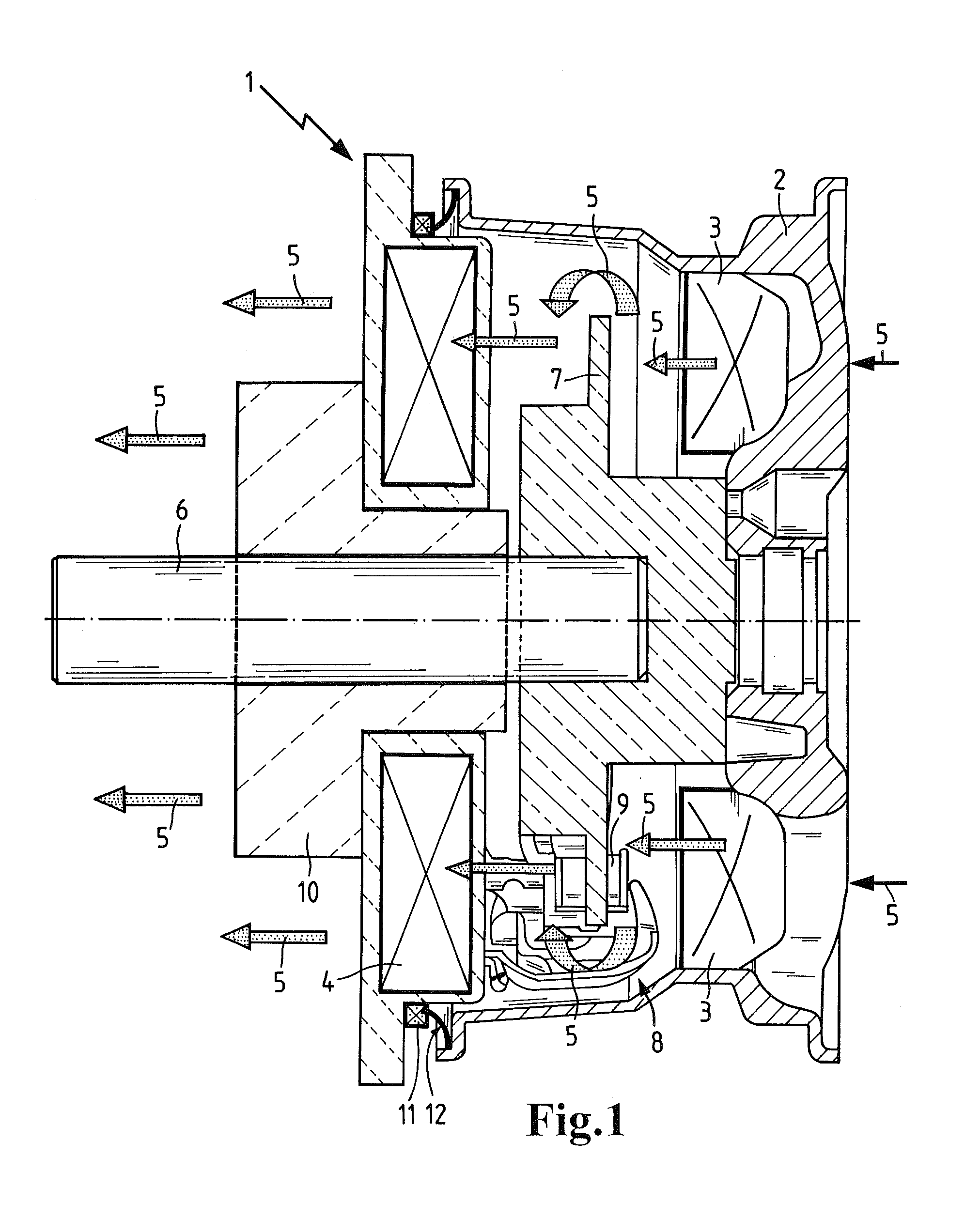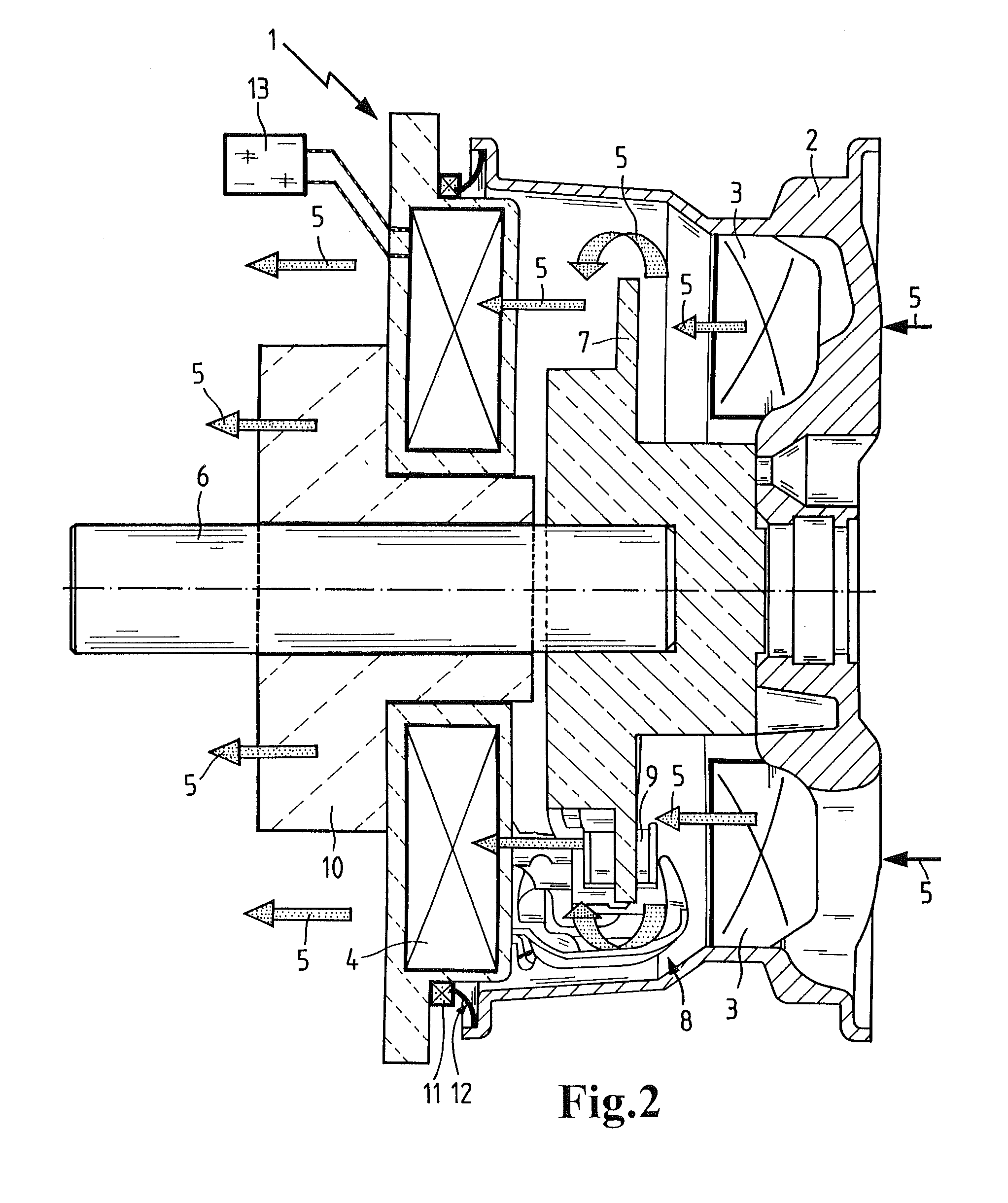Brake Dust Collecting Device for Motor Vehicles
a technology for collecting devices and motor vehicles, which is applied in the direction of cleaning filter means, braking systems, cleaning equipments, etc., can solve the problems of affecting the pressure in the induction tract, changing the air supply into the cylinders of the internal combustion engine, and requiring significant constructive expenditures, so as to improve the filtration efficiency
- Summary
- Abstract
- Description
- Claims
- Application Information
AI Technical Summary
Benefits of technology
Problems solved by technology
Method used
Image
Examples
Embodiment Construction
[0033]FIG. 1 shows a brake dust collecting device 1 for brake dust that is produced as abrasion of a motor vehicle disc brake. The brake dust collecting device 1 is received in the interior of a wheel rim 2 and includes fan blades 3 as well as a dust collecting unit in the form of a filter element 4. The fan blades 3 are located on the inner side of the wheel rim 2 that is facing the vehicle and are fixedly connected to the wheel rim. A plurality of such fan blades 3 are distributed about the circumference. The fan blades 3 have a flow-beneficial shape and generate an air flow 5 that is directed from the exterior to the interior and that passes through the openings in the wheel rim 2. The air flow 5 flows across the brake disc 7 against which the brake pads 9 applied by the brake caliper 8 are resting and transports the brake dust to the filter element 4 that is arranged stationarily on the vehicle. The filter element 4 is annularly shaped and is seated on a casing 10 of the wheel b...
PUM
 Login to View More
Login to View More Abstract
Description
Claims
Application Information
 Login to View More
Login to View More - R&D
- Intellectual Property
- Life Sciences
- Materials
- Tech Scout
- Unparalleled Data Quality
- Higher Quality Content
- 60% Fewer Hallucinations
Browse by: Latest US Patents, China's latest patents, Technical Efficacy Thesaurus, Application Domain, Technology Topic, Popular Technical Reports.
© 2025 PatSnap. All rights reserved.Legal|Privacy policy|Modern Slavery Act Transparency Statement|Sitemap|About US| Contact US: help@patsnap.com



